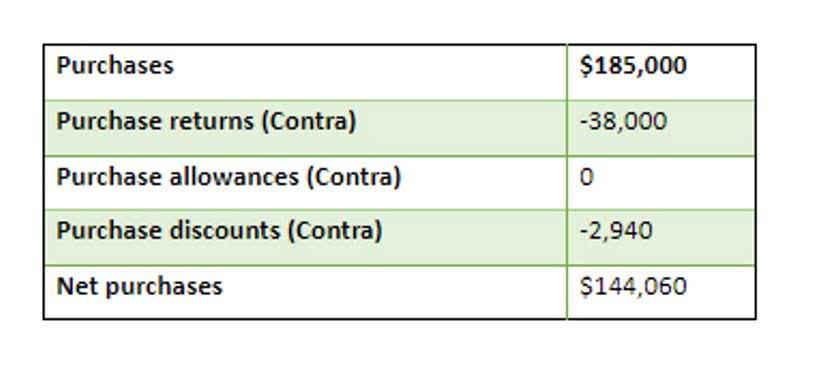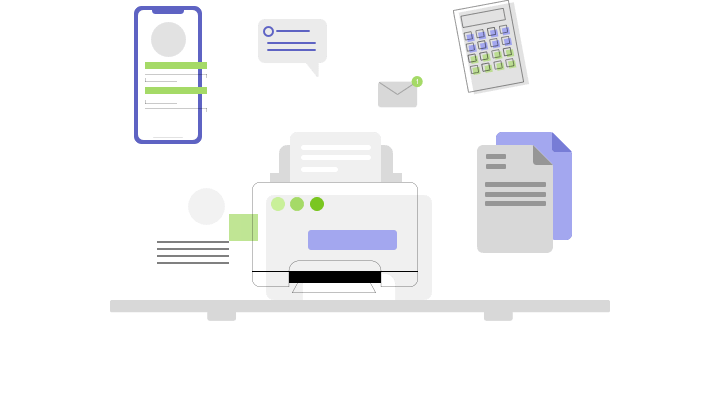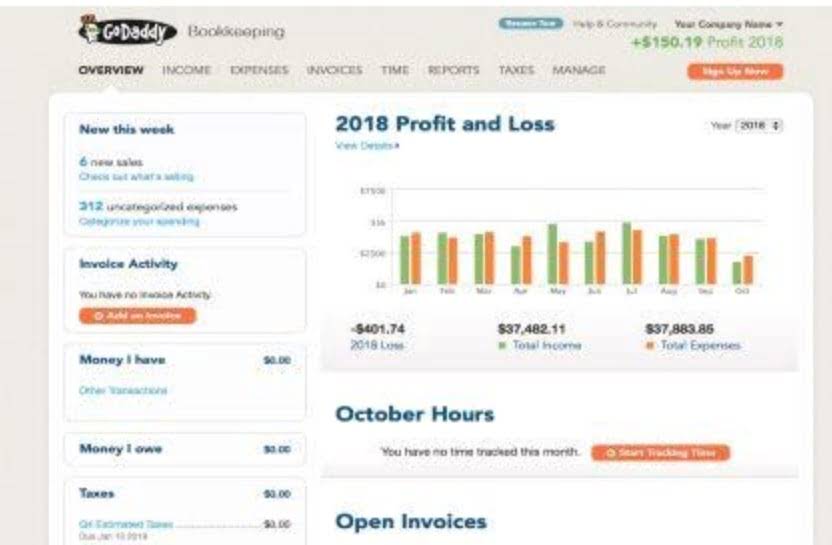Contribution margin is used to plan the overall cost and selling price for your products. Further, it also helps in determining profit generated through selling your products. If all variable and fixed costs are covered by the selling price, the breakeven point is reached, and any remaining amount is profit.
Which of these is most important for your financial advisor to have?
To calculate contribution margin (CM) by product, calculate it for each product on a per-unit basis. After you’ve completed the unit contribution margin calculation, you can also determine the contribution margin by product in total dollars. A subcategory of fixed costs is overhead costs that are allocated in GAAP accounting to inventory and cost of goods sold.
Duration Definition and Its Use in Fixed Income Investing
However, you need to fill in the forecasted units of goods to be sold in a specific future period. The Contribution Margin Calculator is an online tool that allows you to calculate contribution margin. You can use the contribution margin calculator using either actual units sold or the projected units to be sold. In the Dobson Books Company example, the contribution margin for selling $200,000 worth of books was $120,000. This means the higher the contribution, the more is the increase in profit or reduction of loss. In other words, your contribution margin increases with the sale of each of your products.
Contribution margin compared to gross profit margin
For example, the monthly rent payment is considered a fixed cost, because it must be paid in the same amount, even if a business is generating no sales at all. Conversely, a variable cost is any cost that changes in accordance with transaction volume. For example, a commission is only paid when there is a sale, and merchandise costs are not incurred unless there is a sale. There are also mixed costs, such as a monthly base charge for maintaining a bank account, plus additional fees for bounced checks, cashed checks, and so forth. When a business incurs mixed costs, the accountant must determine which portion is fixed and which is variable, so that the variable portion can be included in the contribution margin calculation.
Calculate the company’s contribution margin for the period and calculate its breakeven point in both units and dollars. A low margin typically means that the company, product line, or department isn’t that profitable. An increase like this will have rippling effects as production increases. Management must be careful and analyze why CM is low before making any decisions about closing an unprofitable department or discontinuing a product, as things could change in the near future.
The contribution margin is the foundation for break-even analysis used in the overall cost and sales price planning for products. As mentioned above, contribution margin refers to the difference between sales revenue and variable costs of producing goods or services. This resulting margin indicates the amount of money available with your business to pay for its fixed expenses and earn profit. In other words, contribution margin per unit is the amount of money that each unit of your product generates to pay for the fixed cost. Accordingly, the contribution margin per unit formula is calculated by deducting the per unit variable cost of your product from its per unit selling price.
This means Dobson books company would either have to reduce its fixed expenses by $30,000. On the other hand, net sales revenue refers to the total receipts from the sale of goods and services after deducting sales return and allowances. Variable Costs depend on the amount of production that your business generates. Accordingly, these costs increase with the increase in the level of your production and vice-versa.
Alternatively, companies that rely on shipping and delivery companies that use driverless technology may be faced with an increase in transportation or shipping costs (variable costs). These costs may be higher because technology is often more expensive when it is new than it will be in the future, when it is easier and more cost effective to produce and also more accessible. A good example of the change in cost of a new technological innovation over time is the personal computer, which was very expensive when it was first developed but has decreased in cost significantly since that time. The same will likely happen over time with the cost of creating and using driverless transportation. In the United States, similar labor-saving processes have been developed, such as the ability to order groceries or fast food online and have it ready when the customer arrives.
Our writing and editorial staff are a team of experts holding advanced financial designations and have written for most major financial media publications. Our work has been directly cited by organizations including Entrepreneur, Business Insider, Investopedia, Forbes, CNBC, and many others. This team of experts helps Finance Strategists maintain the highest level of accuracy and professionalism possible. Get instant access to lessons taught by experienced private equity pros and bulge bracket investment bankers including financial statement modeling, DCF, M&A, LBO, Comps and Excel Modeling. This insinuates that 90% of the revenue from these shoes can be used to pay for the new machine and potentially translate to earnings, and only 10% of it will be lost while acquiring the revenue. For example, subtracting the TVC/unit from the TSR would be incorrect as they are values for a different number of units.
This formula indicates the amount left over to cover fixed costs when a unit is sold. It helps companies to make strategic decisions when they have to choose between the production of several products or when they have to adjust their product range. Here we show you examples of how to calculate and work with the contribution margin. To cover the company’s fixed cost, this portion of the revenue is available.
You can use it to learn how to calculate contribution margin, provided you know the selling price per unit, the variable cost per unit, and the number of units you produce. The calculator will not only calculate the margin itself but will also return the contribution margin ratio. At a contribution margin ratio of \(80\%\), approximately \(\$0.80\) of each sales dollar generated by the sale of a Blue Jay Model is available to cover fixed expenses and contribute to profit. The contribution margin ratio for the birdbath implies that, for every \(\$1\) generated by the sale of a Blue Jay Model, they have \(\$0.80\) that contributes to fixed costs and profit.
Management should also use different variations of the CM formula to analyze departments and product lines on a trending basis like the following. Finance Strategists has an advertising relationship with some of the companies included on this website. We may earn a commission when you click on a link or make a purchase through the links on our site.
Crucial to understanding contribution margin are fixed costs and variable costs. Profit margin is calculated using all expenses that directly go into producing the product. If the contribution margin for an ink pen is higher than that of a ball pen, the former will be given production preference owing to its higher profitability potential. The contribution margin can help company management select from among several possible products that compete to use the same set of manufacturing resources.
Contribution margin ratio equals contribution margin per unit as a percentage of price or total contribution margin TCM expressed as a percentage of sales S. The contribution margin concept can be applied throughout a business, for individual products, product lines, profit centers, subsidiaries, distribution channels, sales by customer, and for an entire business. We note below a variety of situations in which it can be employed to enhance the financial position of a business. Although they both concentrate on distinct facets of a company’s financial performance, contribution margin and gross profit margin are financial indicators used to assess a company’s profitability. However, it can also be considered a variable cost because the increased number of units that needed to be produced had a direct impact on the decision to hire temporary workers. Businesses that sell many different products can also use the contribution margin to understand which of their different products are the most profitable.
Analyzing contribution margin helps in optimizing revenues by increasing sales or reducing variable costs, ensuring efficient utilization of resources and enhancing overall profitability. While the contribution margin indicates the profitability of a product, the gross margin shows the amount of turnover remaining after all production costs have been deducted. The concept of this equation relies on the difference between fixed and variable costs. Fixed costs are production costs that remain the same as production efforts increase. Break even point (BEP) refers to the activity level at which total revenue equals total cost. Contribution margin is the variable expenses plus some part of fixed costs which is covered.
The variable costs to produce the baseball include direct raw materials, direct labor, and other direct production costs that vary with volume. Cost accountants, financial analysts, and the company’s management team should use the contribution margin formula. CM is used to measure product profitability, set selling prices, decide whether to introduce a new product, discontinue selling a specific product, or accept potential customer orders with non-standard pricing. It is important to assess the contribution margin for break-even or target income analysis. The target number of units that need to be sold in order for the business to break even is determined by dividing the fixed costs by the contribution margin per unit.
In general, a higher contribution margin is better as this means more money is available to pay for fixed expenses. Although the company has less residual profit per unit after all variable costs are incurred, these types of companies may have little to no fixed costs and maybe keep all profit at this point. Gross margin is synonymous with gross profit margin and includes only revenue and direct production exit strategies for small businesses costs. It does not include operating expenses such as sales and marketing expenses, or other items such as taxes or loan interest. Gross margin would include a factory’s direct labor and direct materials costs, but not the administrative costs for operating the corporate office. To find the number of units required to break even, simply divide the firm’s total fixed costs by the unit contribution margin.
Management accountants identify financial statement costs and expenses into variable and fixed classifications. Variable costs vary with the volume of activity, such as the number of units of a product produced in a manufacturing company. However, https://www.bookkeeping-reviews.com/ ink pen production will be impossible without the manufacturing machine which comes at a fixed cost of $10,000. This cost of the machine represents a fixed cost (and not a variable cost) as its charges do not increase based on the units produced.
Understanding and applying this concept, helps enable businesses to make informed decisions that can enhance profitability and long-term success. Investors use many different indicators and thoroughly examine a company’s financials before deciding to invest in a company. The contribution margin of a company’s product lines is one particular factor investors may look at when researching a company.
- A negative contribution margin tends to indicate negative performance for a product or service, while a positive contribution margin indicates the inverse.
- All you have to do is multiply both the selling price per unit and the variable costs per unit by the number of units you sell, and then subtract the total variable costs from the total selling revenue.
- Use contribution margin alongside gross profit margin, your balance sheet, and other financial metrics and analyses.
- You can use contribution margin to help you make intelligent business decisions, especially concerning the kinds of products you make and how you price those products.
- Below is a breakdown of contribution margins in detail, including how to calculate them.
If they sold \(250\) shirts, again assuming an individual variable cost per shirt of \(\$10\), then the total variable costs would \(\$2,500 (250 × \$10)\). Variable costs are direct and indirect expenses incurred by a business from producing and selling goods or services. These costs vary depending on the volume of units produced or services rendered. Variable costs rise as production increases and falls as the volume of output decreases. The contribution margin is computed by using a contribution income statement, a management accounting version of the income statement that has been reformatted to group together a business’s fixed and variable costs. The difference between the selling price and variable cost is a contribution, which may also be known as gross margin.
To illustrate how this form of income statement can be used, contribution margin income statements for Hicks Manufacturing are shown for the months of April and May. In particular, the use-case of the CM metric tends to be most practical for companies to set prices on their products and services appropriately to maximize their revenue growth and profitability. The contribution margin can also be used to quickly determine the number of units a firm needs to sell to achieve a target operating profit. More importantly, your company’s contribution margin can tell you how much profit potential a product has after accounting for specific costs.
It is a per-item profit metric, whereas gross margin is a company’s total profit metric. Contribution margin ratio is expressed as a percentage, though companies may also be interested in calculating the dollar amount of contribution margin to understand the per-dollar amount attributable to fixed costs. Contribution margin is a business’s sales revenue less its variable costs. The resulting contribution dollars can be used to cover fixed costs (such as rent), and once those are covered, any excess is considered earnings. Contribution margin (presented as a % or in absolute dollars) can be presented as the total amount, amount for each product line, amount per unit, or as a ratio or percentage of net sales. The contribution margin is a cost accounting concept that lets a company know how much each unit sold contributes to covering fixed costs after all variable costs have been paid.
While there are various profitability metrics – ranging from the gross margin down to the net profit margin – the contribution margin (CM) metric stands out for the analysis of a specific product or service. You can calculate the contribution margin for individual products, called unit contribution margin, or for the entire business, which is called total or gross contribution margin. Contribution margins are often compared to gross profit margins, but they differ. Gross profit margin is the difference between your sales revenue and the cost of goods sold.
All of our content is based on objective analysis, and the opinions are our own. Thus, at the 5,000 unit level, there is a profit of $20,000 (2,000 units above break-even point x $10). Another mistake could be made only by looking at the contribution margin when deciding to stop producing a certain product line. For example, suppose a company hires ten extra workers, just for two months, to increase the production of a product during a period of high demand. This can be particularly useful in comparing different products and understanding how profitable a certain product may be relative to another.
Contribution margin income statement, the output of the variable costing is useful in making cost-volume-profit decisions. It is an important input in calculation of breakeven point, i.e. the sales level (in units and/or dollars) at which a company makes zero profit. Breakeven point (in units) equals total fixed costs divided by contribution margin per unit and breakeven point (in dollars) equals total fixed costs divided by contribution margin ratio. Contribution margin is a key financial indicator that showcases the profitability per unit by subtracting variable costs.
This is because fee-for-service hospitals have a positive contribution margin for almost all elective cases mostly due to a large percentage of OR costs being fixed. For USA hospitals not on a fixed annual budget, contribution margin per OR hour averages one to two thousand USD per OR hour. Once you calculate your contribution margin, you can determine whether one product or another is ultimately better for your bottom line. Still, of course, this is just one of the critical financial metrics you need to master as a business owner.
Use contribution margin alongside gross profit margin, your balance sheet, and other financial metrics and analyses. This is the only real way to determine whether your company is profitable in the short and long term and if you need to make widespread changes to your profit models. Fixed costs usually stay the same no matter how many units you create or sell. The fixed costs for a contribution margin equation become a smaller percentage of each unit’s cost as you make or sell more of those units. Where C is the contribution margin, R is the total revenue, and V represents variable costs.
If the contribution margin for a product is negative, management should make a decision to discontinue a product or keep selling the product for strategic reasons. Cost accountants, FP&A analysts, and the company’s management team should use the contribution margin formula. CM is used to measure product profitability, set selling prices, decide whether to introduce a new product, discontinue selling a product, or accept potential customer orders with non-standard pricing. On the other hand, a company is not required to externally disclose its amount of variable costs. In its financial statements, it is not required to bifurcate fixed expenses from variable costs. For this reason, contribution margin is simply not an external reporting requirement.
Calculating contribution margin (the difference between sales revenue and variable costs) is an effective financial analysis tool for making strategic business decisions. Because gross margin encompasses all costs necessary to manufacture a good, some may argue it is a more transparent figure. On the other hand, a company may be able to shift costs from variable costs to fixed costs to “manipulate” or hide expenses easier. On the other hand, internal management may be most interested in the costs that go into manufacturing a good that are controllable. Alternatively, contribution margin is often more accessible and useful on a per-unit or per-product basis. A company will be more interested in knowing how much profit for each unit can be used to cover fixed costs as this will directly impact what product lines are kept.…








